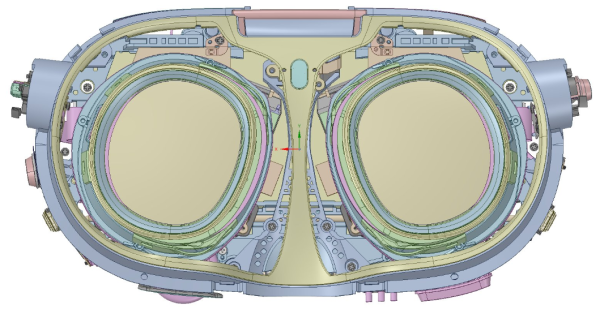Fresh Details Emerge About the Meta Quest 3 Display
Firmware findings hint at a Meta Quest 3 headset with a higher frame rate than Meta’s recently released and work-focused Quest Pro headset.
Quest data miner Samulai chanced on the information last summer which indicates the kind of display used in the Quest 3 headset. The information was contained in the firmware Update 43.
According to the lines of the code, the internal prototype of the headset is codenamed Eureka865 and it uses a single LC display that has a resolution of 4,128 by 2,208 pixels. This is the equivalent of 2,064 by 2,208 pixels per eye. This amounts to a pixel count that is 30% more than that of the Meta Quest 2 headset. The headset reportedly has a refresh rate of 90Hz.
Samulia is now reporting that he has discovered a 120Hz version of the display configuration hidden in the latest beta firmware version 49. The information is hinting to a Quest 3 headset capable of supporting a much higher maximum refresh rate.
120Hz Refresh Rate Would be Standard in VR Hardware
The current generation Meta Quest 2 headset has been supporting a 120Hz refresh rate by default for a few months now. However, it only does so for virtual reality apps that have been optimized for the refresh rate. The Quest 2 home environment along with the system menus are still running at 90Hz. Should the Meta Quest 3 headset have a faster SoC, these sections, along with other virtual reality apps will benefit from the higher refresh rate.
Update on Quest 3 Displays prediction:
It uses LCD display(s) with a resolution of 2064×2208 per eye running up to 120hz at launch pic.twitter.com/ZuLHd8URIC
— Brad Lynch (@SadlyItsBradley) January 10, 2023
YouTuber and VR hardware analyst Brad Lynch reported that JDI and even BOE could build the Meta Quest 3 LCD panels. However, Lynch said that the Meta Quest 3 might not have local dimming functionality for higher contrast which is found in the Meta Quest Pro.
Quest Pro is a high-end $1,500 headset that has a maximum refresh rate of 90Hz. It now looks like Meta is keen to improve the frame rate in Quest 2 should these findings prove accurate. In a past Connect talk, John Carmack stated that all Meta headsets after Meta Quest Pro would support 120Hz refresh rate. The firmware findings could, therefore, be an accurate reflection of what to expect in Quest 3.
Meta Could be Testing the Next Generation Chip
Samulia also discovered that the earlier codename used in the previous firmware, “Eureka865”, had been changed to Eureka. The number 865 referenced the SoC used in the Meta Quest 2 headset – the Snapdragon XR2 Gen 1. The XR2 Gen 1 has, in turn, been derived from the Snapdragon 865 smartphone SoC. According to XR hardware analyst Lynch, this change of name, with the dropping of the 865 in the name, might suggest that the Meta switched to the next SoC generation in the Quest 3 headset 0the Snapdragon XR2 Gen 2. This latter chip is, obviously, considerably faster than the older generation chip.

Lynch’s sources have in the past also intimated that the Meta Quest 3 headset will certainly be powered by next-gen SoC and the first test kits have reportedly already been dispatched to Meta as well as other XR hardware companies.
In his update about Quest 3, Lynch also predicts that the next generation Quest headset will feature pancake lenses and that it will be shipping with controllers similar to Meta Quest’s controllers, that is, with tracking rings rather an inside-out tracking.
The Meta Quest 3 will reportedly launch in the fall of this year according to various leaks and rumors.
https://virtualrealitytimes.com/2023/01/11/fresh-details-emerge-about-the-meta-quest-3-display/https://virtualrealitytimes.com/wp-content/uploads/2023/01/Quest-3-headset-600x314.pnghttps://virtualrealitytimes.com/wp-content/uploads/2023/01/Quest-3-headset-150x90.pngTechnologyFirmware findings hint at a Meta Quest 3 headset with a higher frame rate than Meta’s recently released and work-focused Quest Pro headset. Quest data miner Samulai chanced on the information last summer which indicates the kind of display used in the Quest 3 headset. The information was contained in...Rob GrantRob Grant[email protected]AuthorVirtual Reality Times - Metaverse & VR
